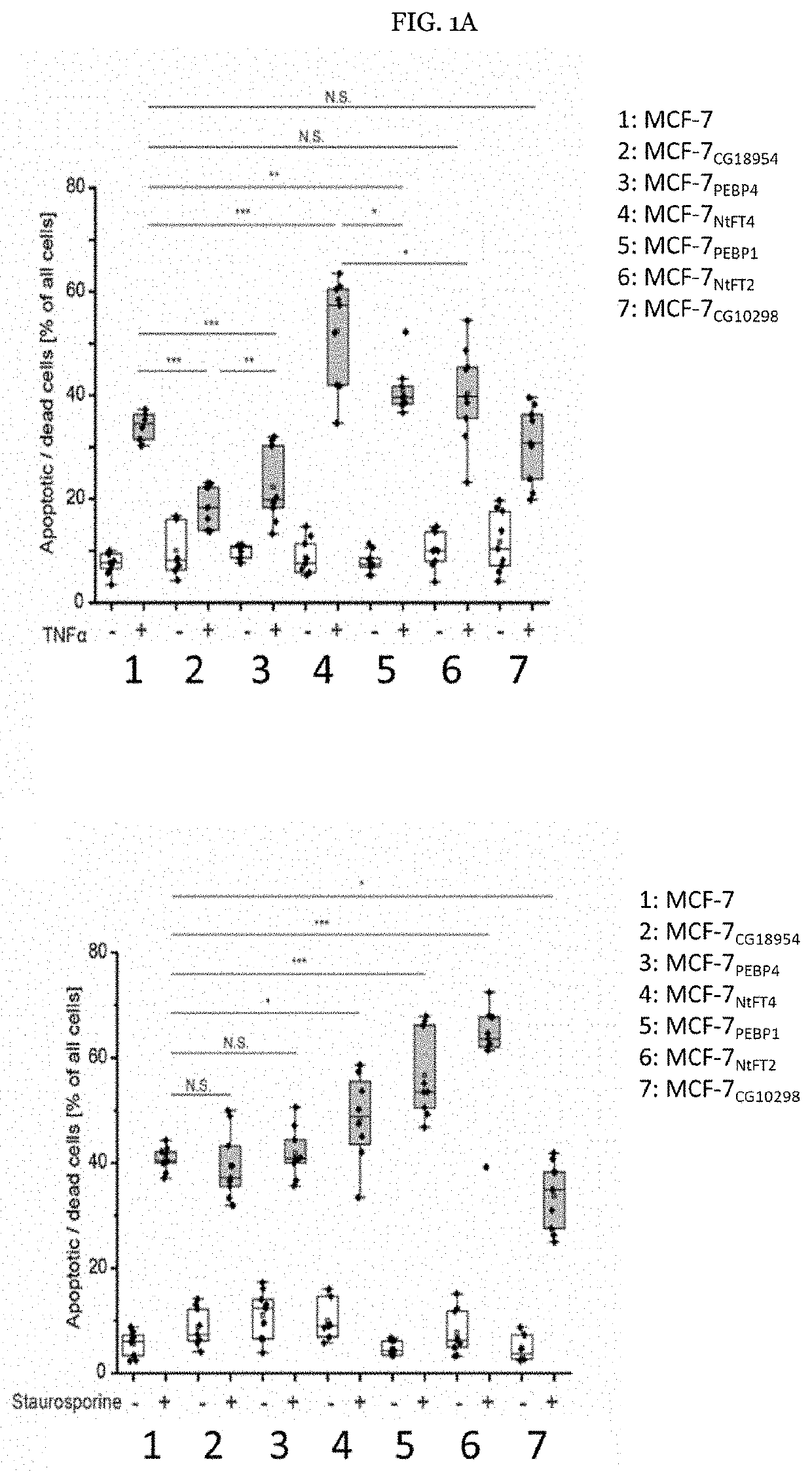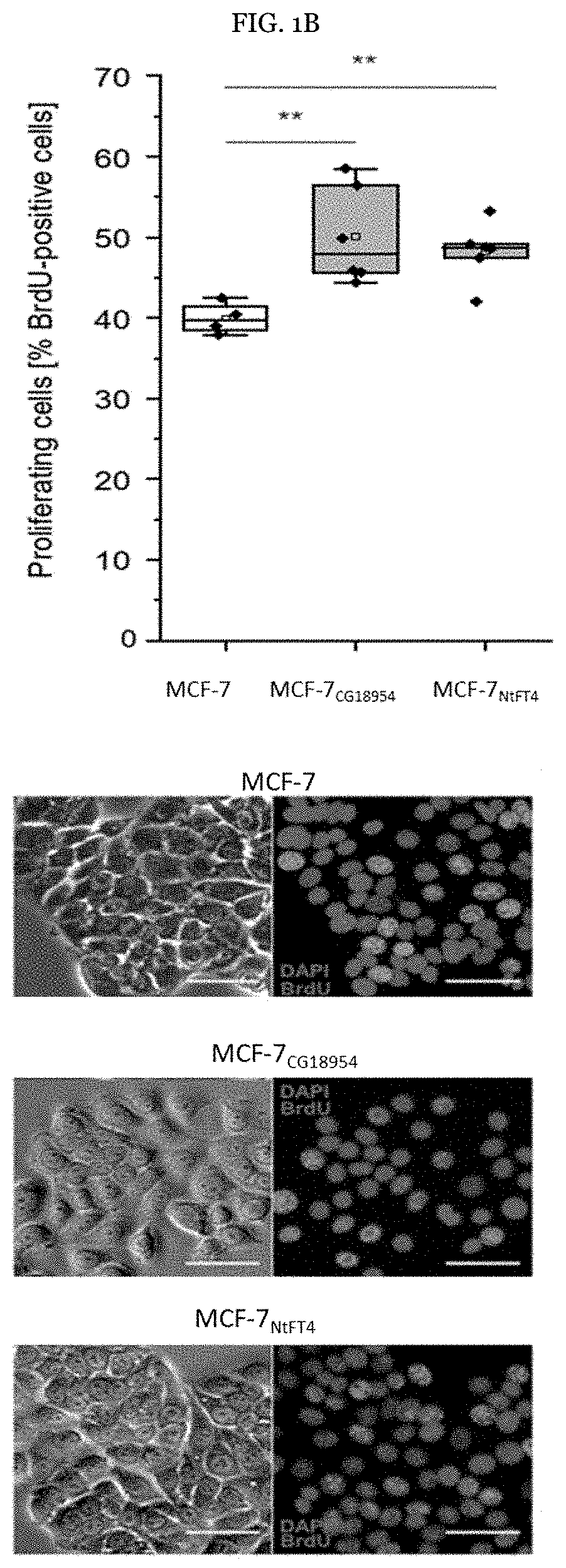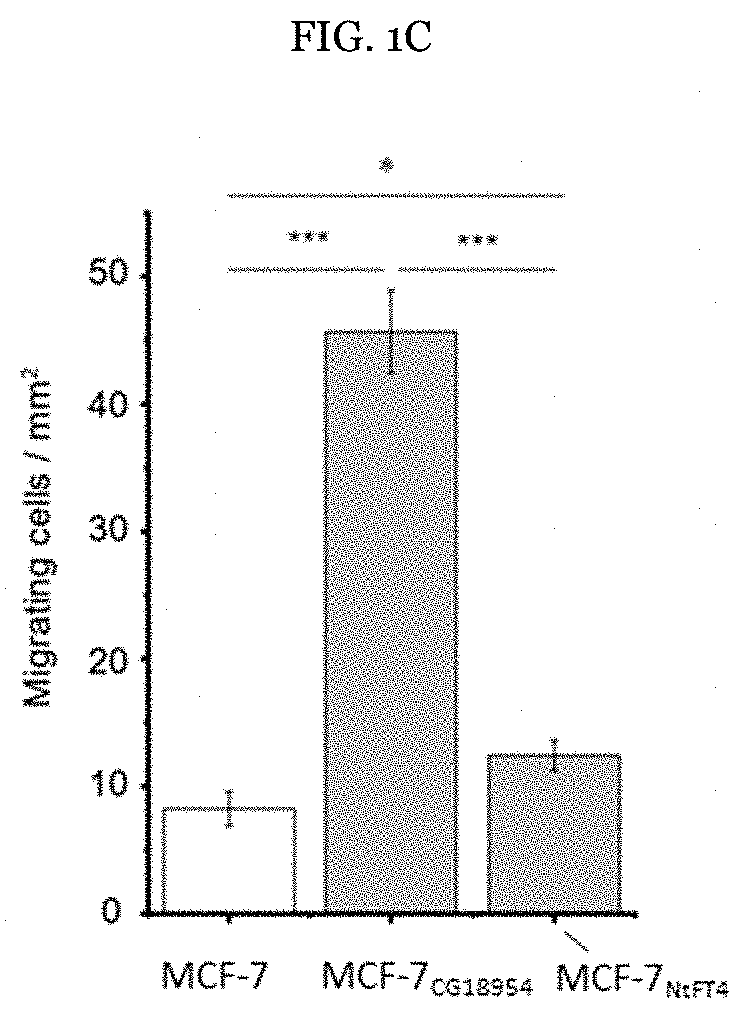Genetically modified recombinant cell lines
- Summary
- Abstract
- Description
- Claims
- Application Information
AI Technical Summary
Benefits of technology
Problems solved by technology
Method used
Image
Examples
examples
[0104]Certain aspects and embodiments of the invention will now be illustrated by way of example and with reference to the description, figures and tables set out herein. Such examples of the methods, uses and other aspects of the present invention are representative only, and should not be taken to limit the scope of the present invention to only such representative examples.
[0105]The examples show:
[0106]Example 1: CG18594 induces mesenchymal traits, promoting apoptotic resistance and proliferation in MCF-7 cells. Initially, the pro-apoptotic activity of PEBP1 and the anti-apoptotic activity of PEBP4 in the human breast cancer cell line MCF-7 were investigated, confirming their reported properties (FIG. 1A). Among the non-human PEBPs, CG18594 in particular conferred pronounced apoptotic resistance (FIG. 1A), increasing the ability of MCF-7 cells to inhibit responses to TNFα, in a similar manner to PEBP4.
[0107]The ability of MCF-7CG18594 cells to resist apoptosis was surprising beca...
PUM
 Login to View More
Login to View More Abstract
Description
Claims
Application Information
 Login to View More
Login to View More - R&D
- Intellectual Property
- Life Sciences
- Materials
- Tech Scout
- Unparalleled Data Quality
- Higher Quality Content
- 60% Fewer Hallucinations
Browse by: Latest US Patents, China's latest patents, Technical Efficacy Thesaurus, Application Domain, Technology Topic, Popular Technical Reports.
© 2025 PatSnap. All rights reserved.Legal|Privacy policy|Modern Slavery Act Transparency Statement|Sitemap|About US| Contact US: help@patsnap.com



